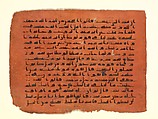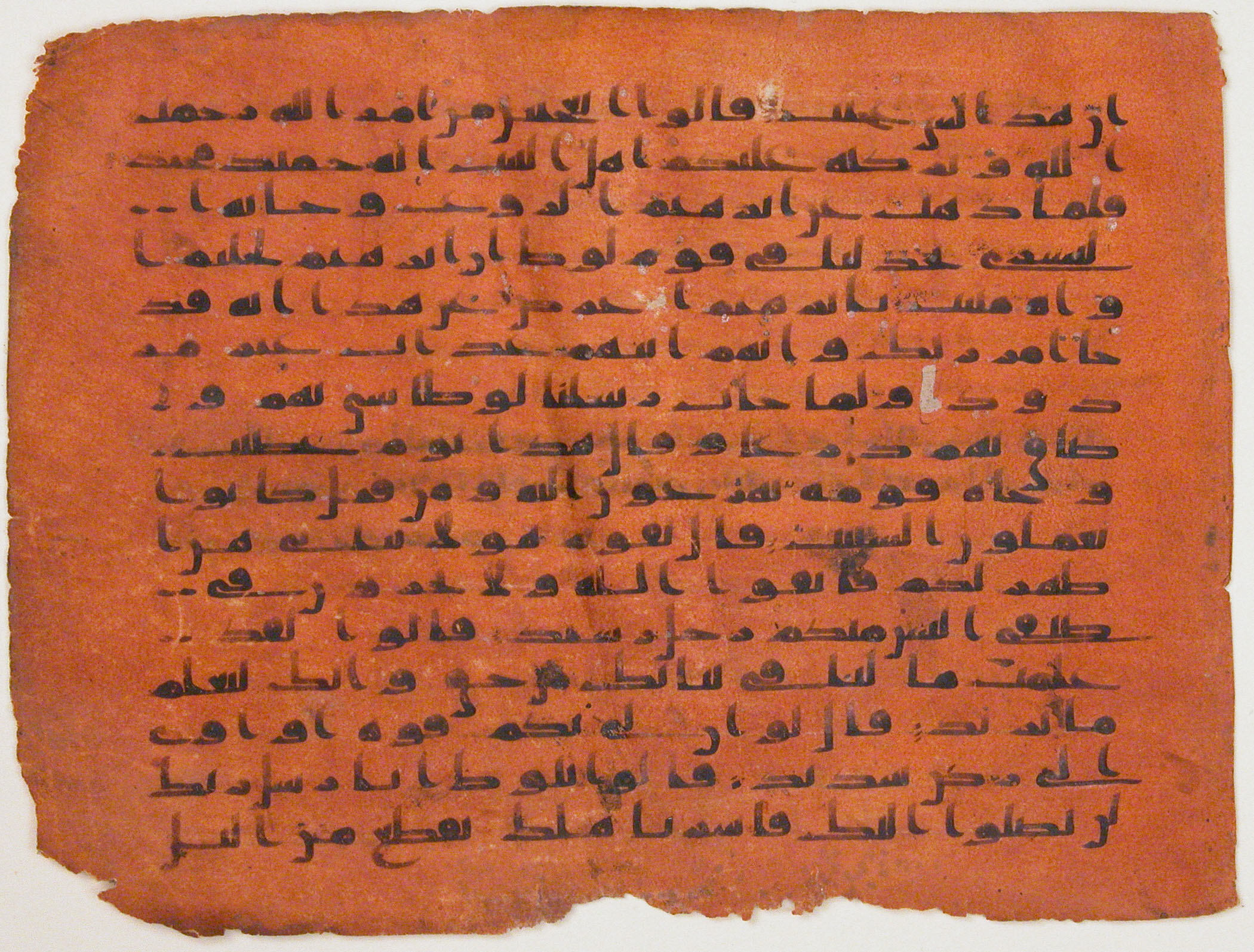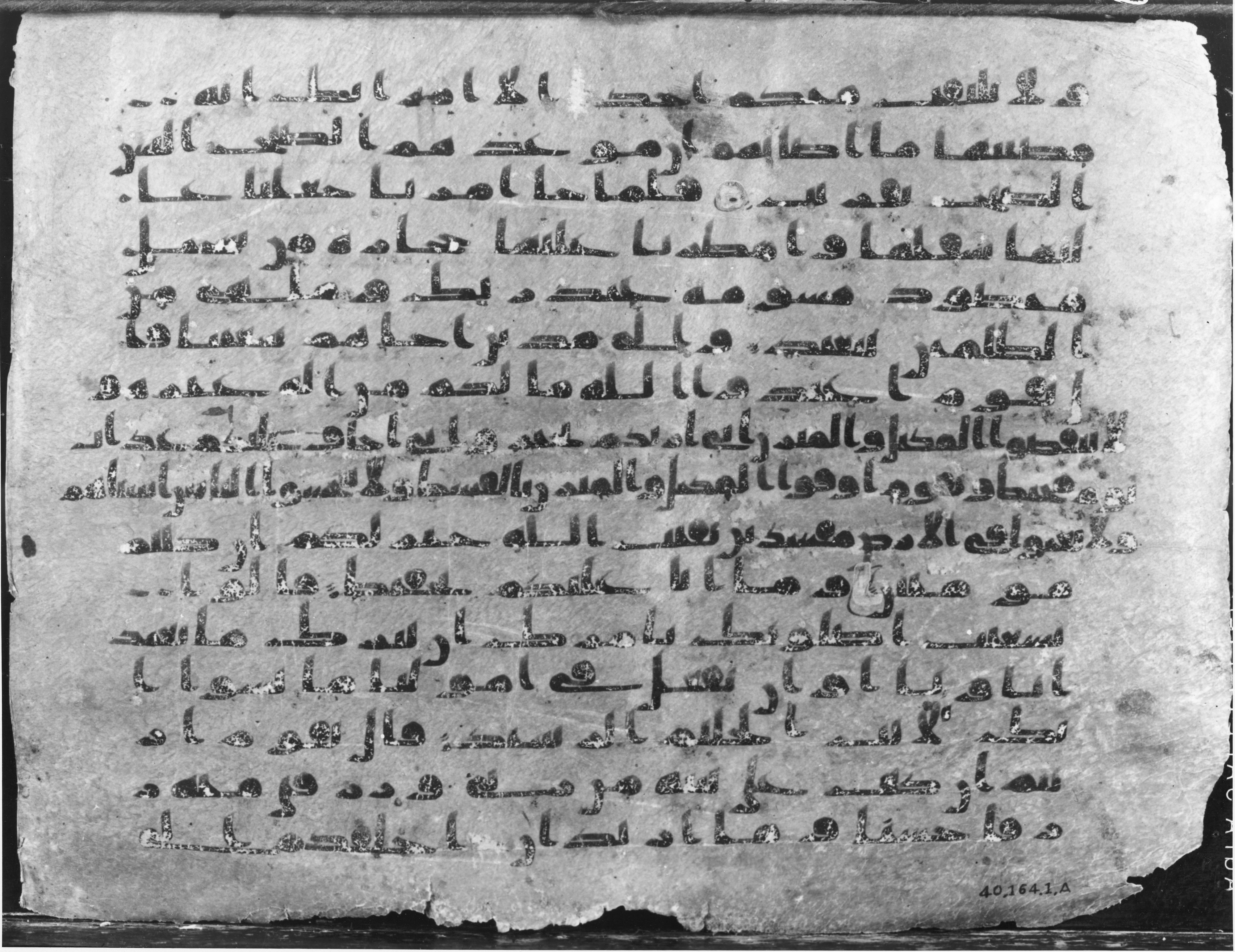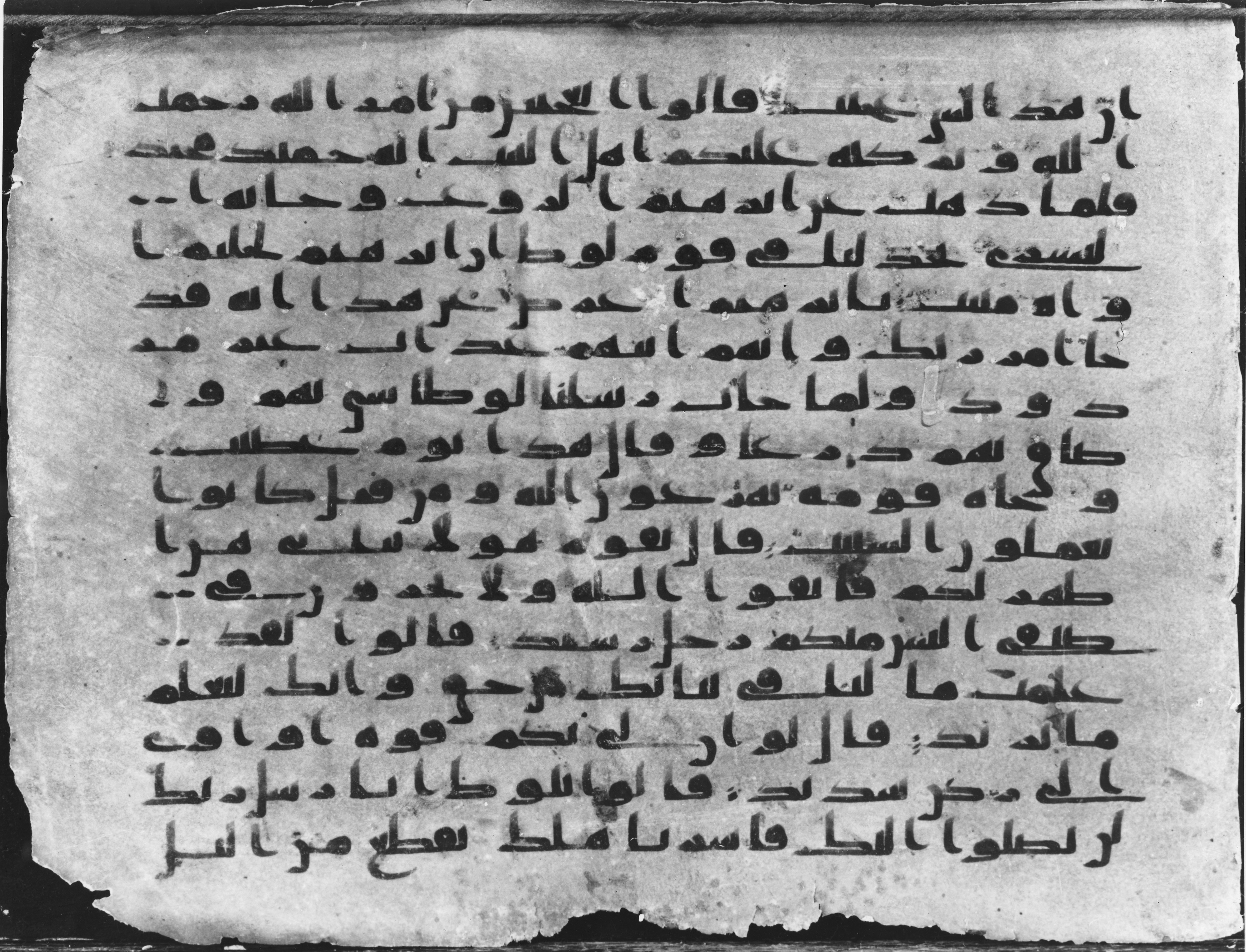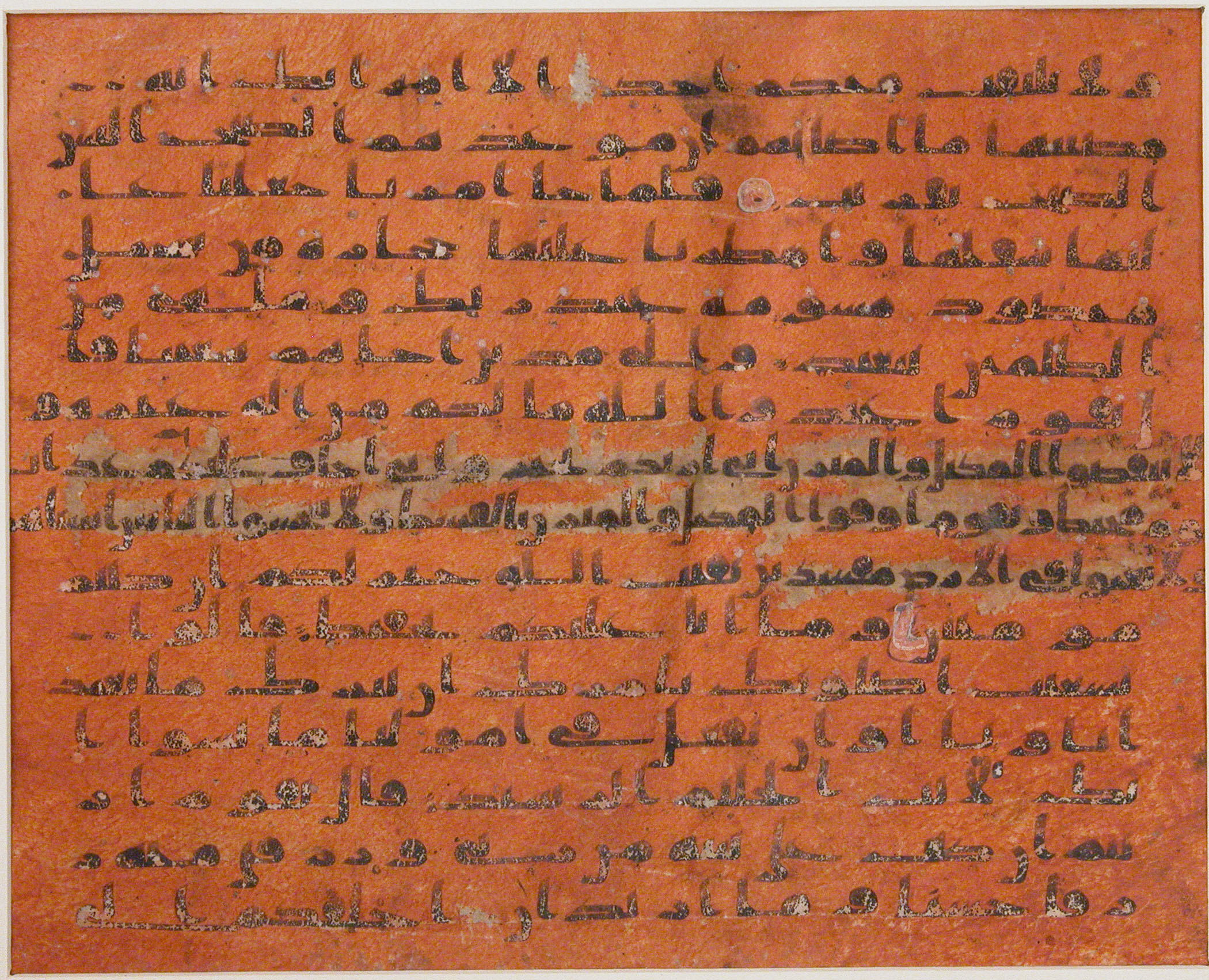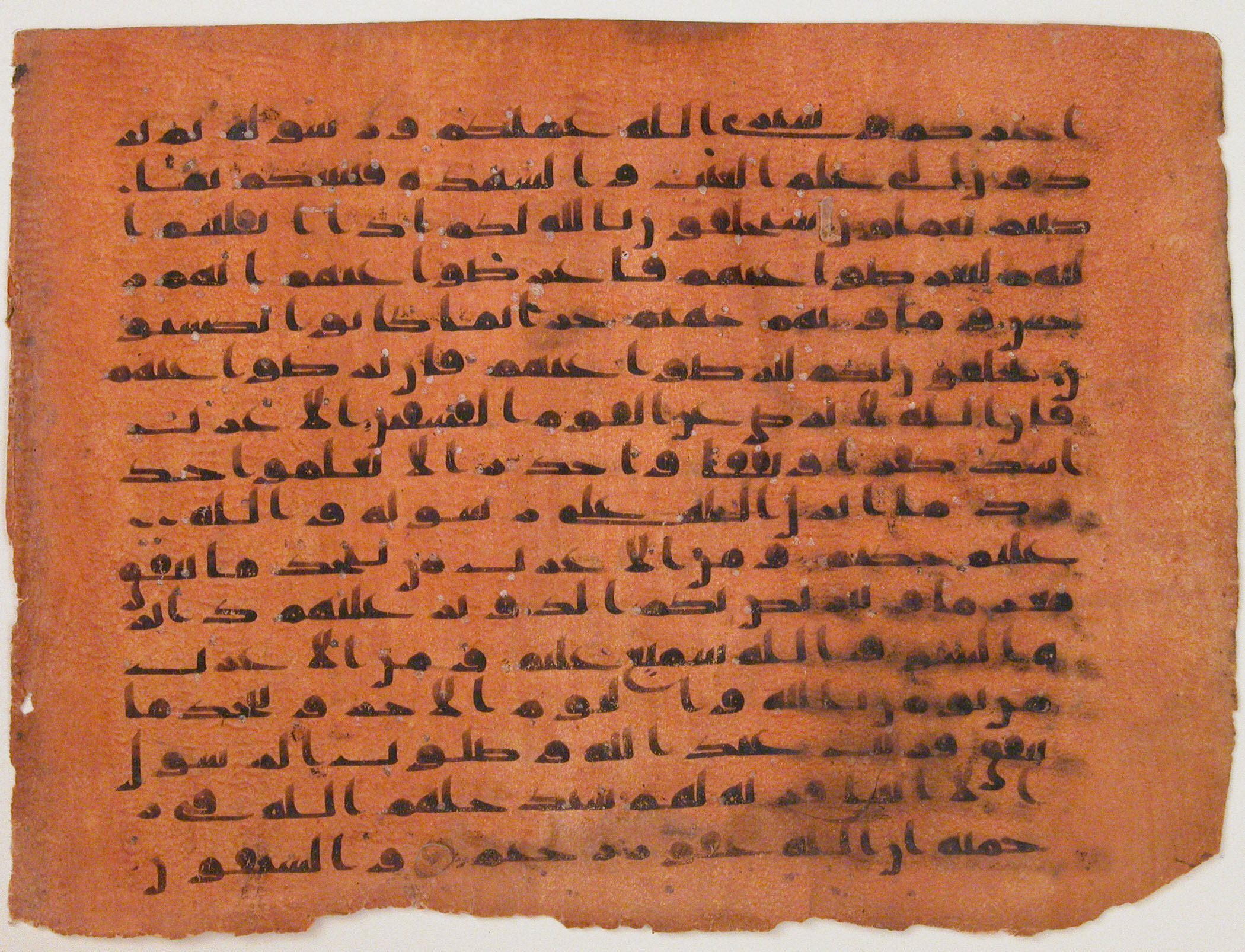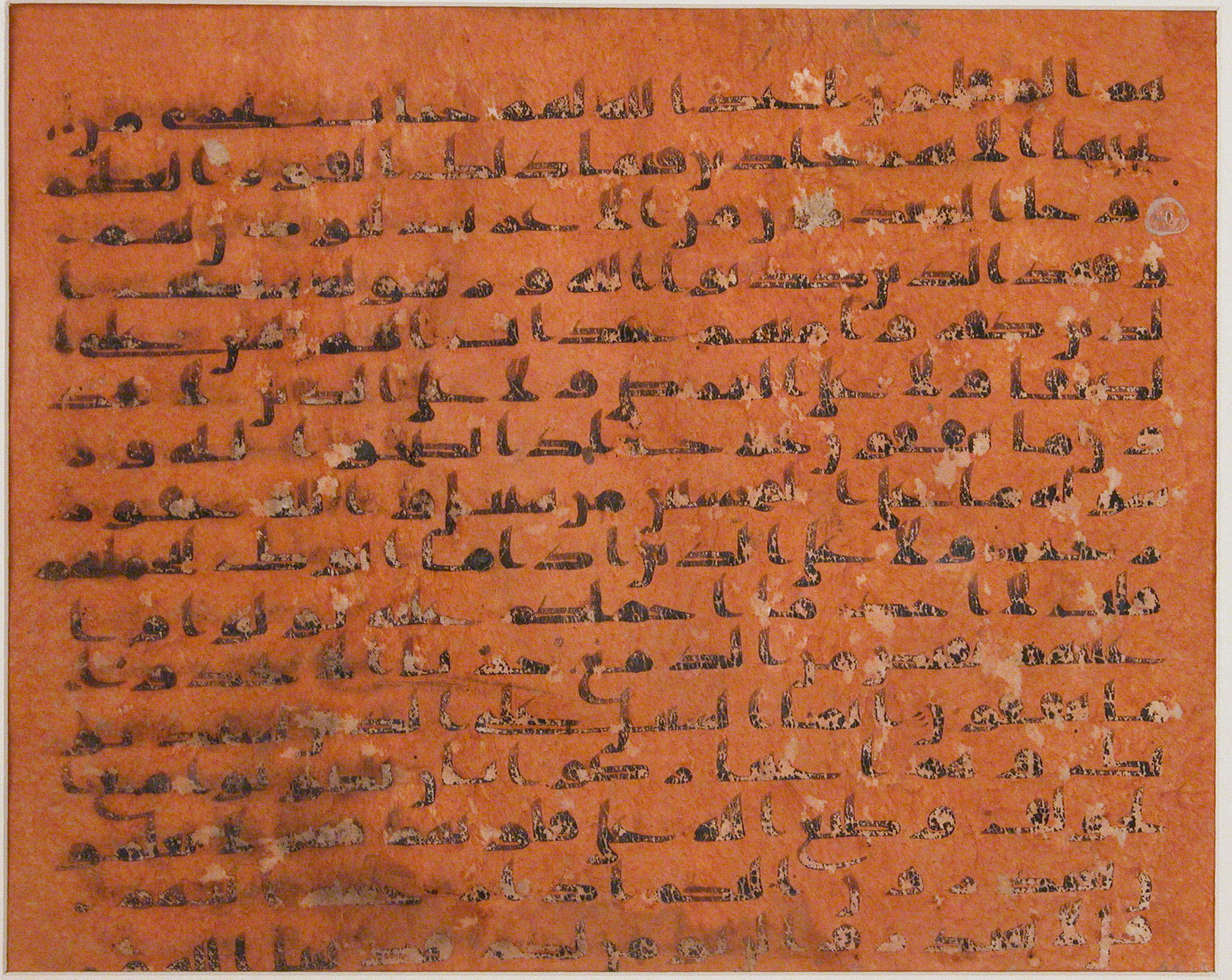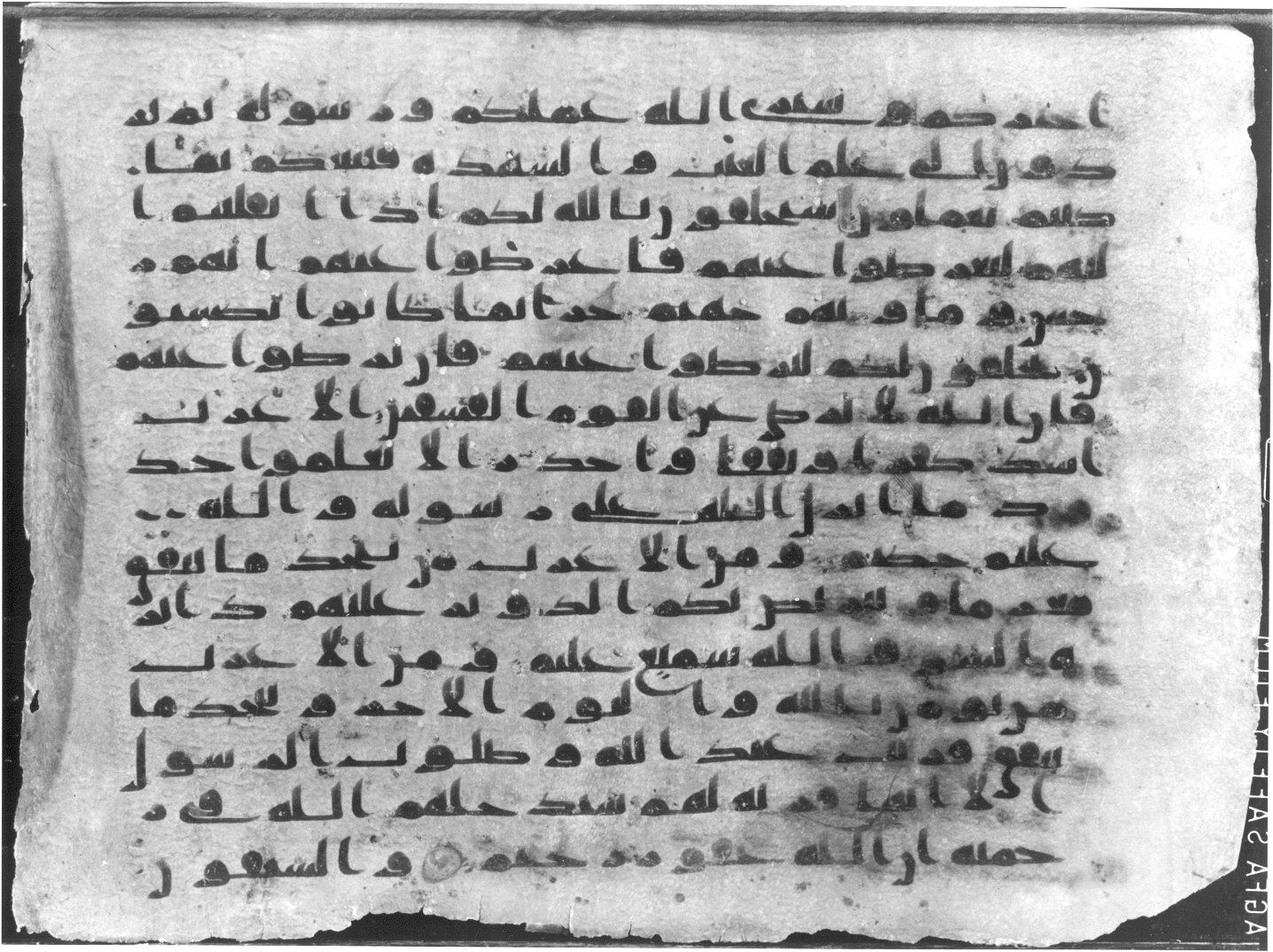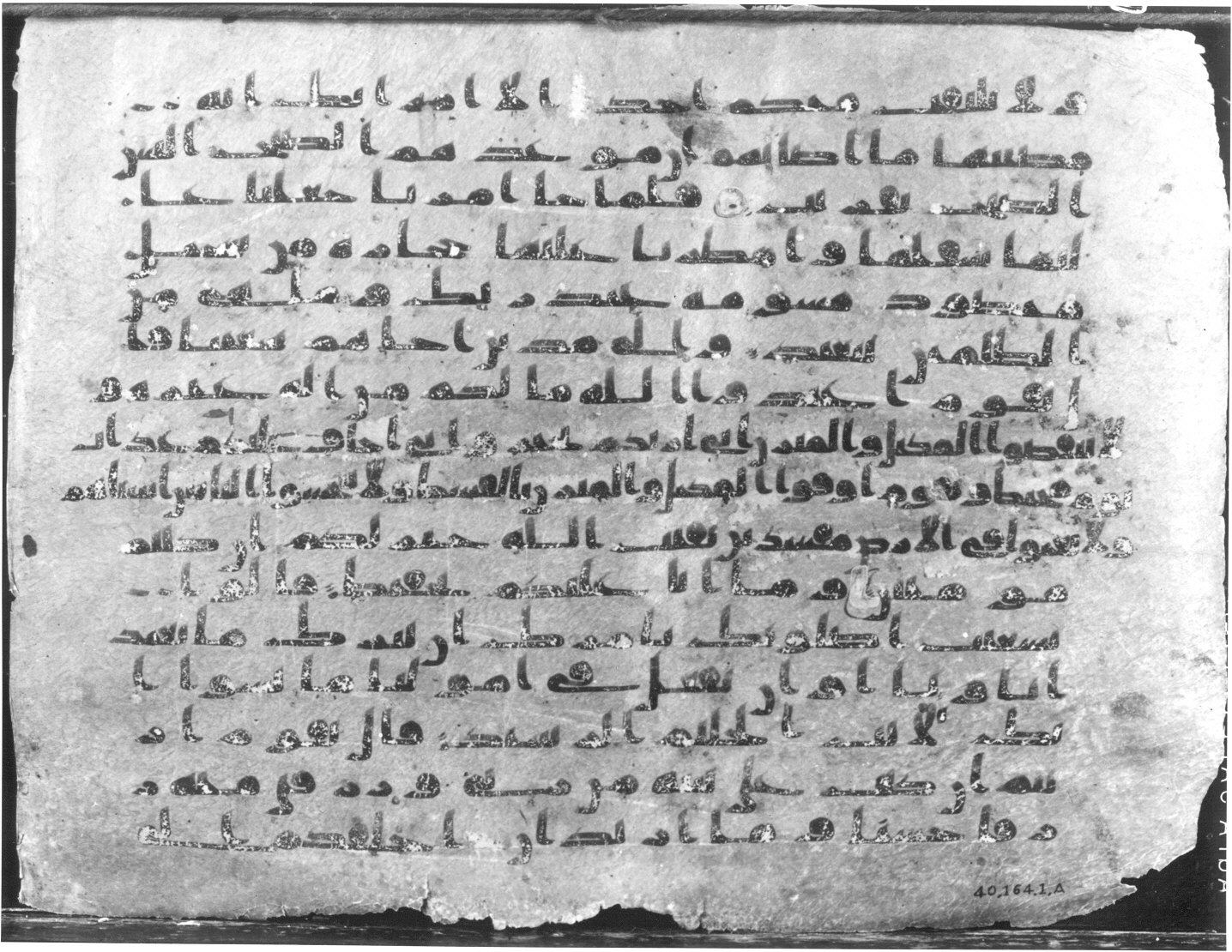Folio from a Qur'an Manuscript
Not on view
The tradition of dyed manuscripts developed in Byzantium for making valuable books, such as the Gospels. The technique continued into the early Islamic period, with the Blue Qur’an as its most spectacular manifestation. Tinted pages were used only in the most luxurious manuscripts, for they required extra work in preparing the already expensive parchment with precious pigments. Here, pages dyed red support a dense, regular script completed in a plain ink. This folio can be dated to the early Islamic period thanks to its simple kufic calligraphy. This script lacks the vowels or diacritical marks typical of the later, more developed written form of Arabic.
Due to rights restrictions, this image cannot be enlarged, viewed at full screen, or downloaded.
This artwork is meant to be viewed from right to left. Scroll left to view more.
